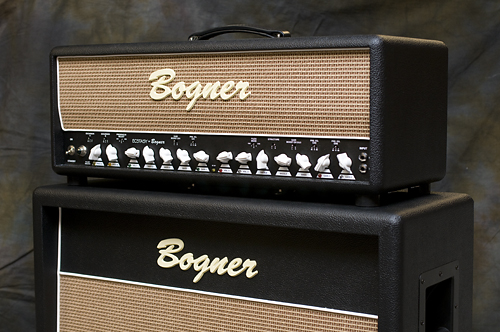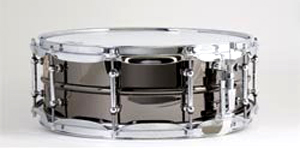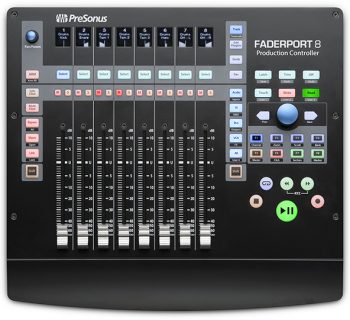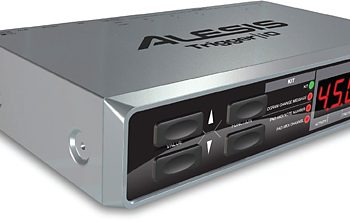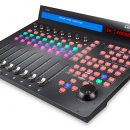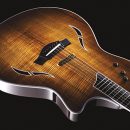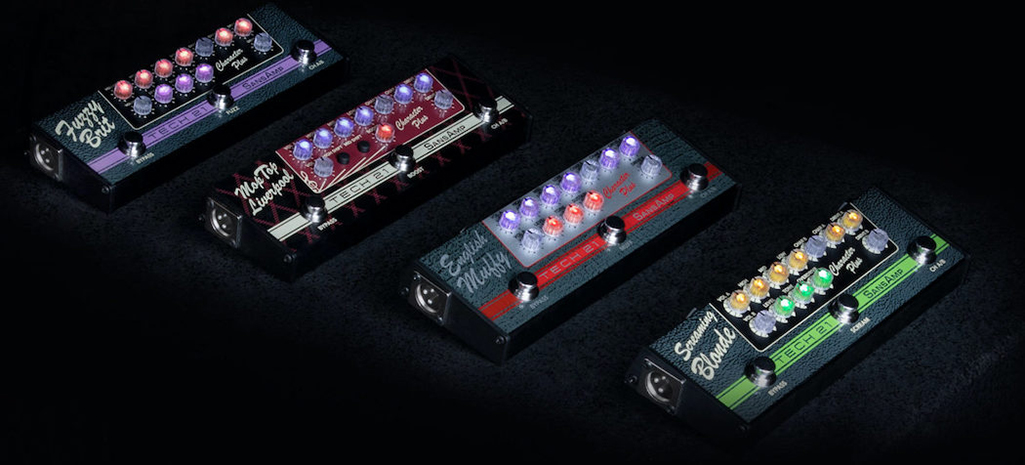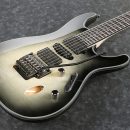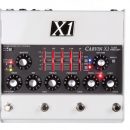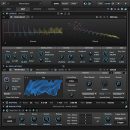Ecstasy: The ultimate pleasure point at which all measurable aspects exceed ones ultimate desires. For musicians, just expressing oneself through music achieves such a blissful feeling. Yet serious guitarists continually struggle with trying to find the ultimate tone — could it really all be in the fingers?
Any boutique amp builder will reassure you that fingers are just one part of the equation, and after you’ve found the right guitar to pair with those fingers, the next piece of the ultimate tone equation is certainly going to come down to your choice of amplifier.
The Bogner Ecstasy amplifier is coveted as being one of the most desirable guitar amps on the boutique market today. Though you’ll pay the price, having one of these amplifiers in your collection will indeed bring you one step closer (if not all the way) to… ultimate tone!
Whatever style of music you crave and however you want to mold your sound, the three-channel, all-tube Bogner Ecstasy may just have the perfect tone you’ve been searching for. It sure messed up our sense of harmonic bliss when we had to return the amp and go back to playing our standard setup… and that setup was already a rig that others admired for beautiful tone. Bottom line: Unless you’re prepared to buy one, we suggest not spending much time playing the Ecstasy unless you have ready access to antidepressants.
Features
![]()
Our review amp was the Bogner Ecstasy 101B Head (EL34 power tube configuration) and 2x12 oversized closed-back speaker cabinet loaded with Celestion V30s. Options include: the Ecstasy 101A Head (6L6 power tube configuration) and an optional rear panel that converts the closed-back cabinet to an open back (a combo configuration and low-wattage alternatives are no longer offered).
The Bogner Ecstasy provides multiple switching options to tailor your preferred tonal characteristics including selection of power amp type (Class A or A/B), output power (Half or Full), and sound style (Old or New). Depending on the settings you choose, the power output will change from 100 to 50 to 25 watts.
The preamp section is configured using 6x12AX7 tubes which support Channels 1, 2 and 3 plus a tube-buffered FX Loop. The loop features selectable series or parallel routing and an FX Mix control. In conjunction with the FX Loop, there is a common Master Volume control purely for matching the Loop On and Loop Off volumes.
The Bogner Ecstasy features three independent Channels: Channel 1 features independent Gain, Bass, Middle, Treble, Volume, Pre-EQ, and Gain Boost controls. Channel 2 and Channel 3 feature independent Gain, Volume, Pre-EQ and Gain Boost controls, but share the primary Bass, Middle, Treble, and Structure (Gain Structure Low or High) controls.
In addition, a Plexi mode switch can be engaged on either Channel 2 or Channel 3. We will talk in more detail about this in the Usability section of this review, but the key note for Channels 2 and 3 is that although though they contain shared tone controls, the independent Pre-EQ selection (per channel) does allow you to tailor two completely different sounds.
Also assignable are Presence A and B controls and Excursion A and B settings for dialing in the desired feel. (Excursion, Ford SUV? No. Even though it does relate to “travel,” you’ll need to read on for the deep dive.)
The Bogner Ecstasy is controllable via a foot controller featuring Carling-style button switches. Controllable functions include selecting Channel 1, Channel 2, Channel 3, Boost 1, Boost 2, FX Loop On/Off, and Mute. Note that while the Standby switch on the amp reduces voltage to the plate in typical fashion, the switch on the foot controller does not — it’s just there for silent switching of guitars or tuning, and should be thought of more appropriately as Mute rather than a true Standby.

Other features include:
- Dual High and Low inputs to accommodate different pickup configurations.
- Line-Out and Line-Out Level control for routing to a separate power amp or mixing console.
- Speaker Ohm settings: 4, 8 and 16.
- Channel Select button switches on the rear of the head for use when not connected to the foot controller.
- Optional Medusa cable for connecting the Bogner Ecstasy head via the foot controller connection to a MIDI switching system such as a Voodoo Labs GCX or a Custom Audio Electronics Bradshaw unit.
For those of you who like your sound a little wet, one thing you won’t find on this amp is reverb. But for purists and tone worshipers, you probably won’t want any effects that could mask the Ecstasy’s tone.
Usability
![]()
The Bogner Ecstasy 101B control functions and layout require some orientation/familiarization before a comfort level can be obtained and on-the-fly changes made. For the most part, the top row of controls on the face of the head include all switchable functions that once set, may not need to be changed unless you decide to undergo a total tonal reconfiguration. Each switch provides either a two-position or three-position slider switch that is recessed enough to ensure the setting does not accidentally get changed. In order to totally understand the meaning and functions of some of the switches, you will need to reference the User’s Manual. In short, “Excursion” relates to the amount of flex the speaker cone will travel: loose or tight, and “Structure” relates to the gain structure: low or high. Further explanation of each function can be found in the Sound section of this review.
The second row of controls contains the primary controls for Channels 1, 2 and 3. Unlike many three-channel amplifiers, the Bogner Ecstasy provides independent tone controls for Channel 1, but provides shared tone controls (Treble, Mid, and Bass) for Channel 2 and Channel 3. Though this tends to hinder complete control of Channel 2 and Channel 3 independently, a Pre-EQ switch for these channels is provided for additional tonal options. Within each Pre-EQ section, there are three settings to choose from including N (normal setting), B1 (bright setting), and B2 (brighter setting.) Once these major tonal character functions are set, incremental changes can easily be made via the standard tone controls. This arrangement makes sense when you consider how you might go about tailoring your own Overdrive channel. We usually have a specific tonal sound in mind, and once set, the only changes we may make are in increasing the gain and volume settings for a second lead voicing, or we may just want a little more brightness to add that additional cut and definition.
The knobs are laid out in one straight line and are easily identifiable by a white block with each function name labeled in black lettering — readability was great. In addition, each channel’s Volume and Gain control has a color-coded LED that matches color-coded LED’s found on the foot controller. The only controls that felt out of place to us were the position of the Pre-EQ switches and Volume/Gain control knobs for Channel 2 and Channel 3. In pecking order, these controls are (left to right): Channel 3 and then Channel 2. Though not a major issue, it tended to make us think every time we went to make an adjustment (that’s right, musicians do think every now and then, in contrast to the public’s belief).
Also aiding in the visual separation between Channel 1 and Channel 2/3 is the Standby LED located dead center, which, awesomely enough, is controlled in two ways: by the Standby switch located at the left of the control knobs OR via the foot controller. This makes emergency shutdown more accessible than with other amps depending on where you are positioned on stage at the time.
The power amp section of the Bogner Ecstasy contains three different mode selection switches to determine a preferred wattage amount. By setting the amp to Class AB, Full power, and New style mode, you can obtain an approximate power rating of 120 watts. By changing each setting to Class A, half power and Old style mode, you can reduce the power rating to approximately seven watts. This is key for capturing the vintage tones of yester-year, plus your ears may thank you, too.
The foot controller provides standard operation for channel selection. In addition, Channel 1 and Channel 2 share a Boost control while Channel 3 has an independent Boost control. This is a great feature for increasing gain during solo sections. The only drawback is that the level/boost amounts are predetermined by Bogner and are not adjustable.
Also controllable from the foot controller is the effects loop On/Off and Standby switch. The foot controller is definitely road worthy with its metal housing and Carling-style button switches, but the hard-wired cable was a surprising design fault as it makes replacement extremely difficult in the event of a short.
Sound
![]()
Bogner Amplification is no stranger to the boutique amplifier arena, and knowing that their sound is coveted by many of the greatest players, we couldn’t wait to hear what this amp would do for us. For purposes of this review, we used a Gibson ES-335 and a Fender Eric Johnson Stratocaster.
There are a number of different setting options in both the power amp and preamp sections of the amplifier. We started out by setting the power amp Class A/AB switch to Class AB power, the output power Half/Full selection to Full (100 watts), and the sound style switch to New giving us the most wattage possible. This only scratched the surface of the capabilities of the Bogner Ecstasy, but with this much headroom and punch, we didn’t have to worry about any other bullies on the block.
Not only was the sound huge in volume, but the Ecstasy maintained a very clear, definable tone and attack at all volume levels. One very important and noticeable sound characteristic of the Bogner Ecstasy is the purity in tone we found while exploring each channel. You can’t help but be overcome by the richness of every harmonic stage produced by each guitar. With a hallmark sound emanating from our Strat, the bell tone seemed more enhanced and jangly while the ES-335 bloomed with its semi-hollow body, woodsy tone.
To check out the opposite side of the spectrum, we switched our settings to Class A power, half output power, and Old sound style mode. This dropped our wattage to approximately seven watts, reducing headroom while producing a very smooth, creamy tone with just the right amount of compression. Being the vintage snobs that we are [Editor’s Note: Actually we’re modern snobs, too, just as long as the tone is righteous!], we kept the Class A setting for most of the review as it gave us the bloom of a true vintage amplifier but also allowed us to dial in some aggressive modern voicings, too.
In setting up our sounds for each channel, we started with the basic control functions (Volume, Gain, Treble, Mid and Bass) to obtain a solid foundation before making sound “character” adjustments via the top row of “boutique” switches. Adjustments within each volume and tone control provided a wide array of options. It was interesting to note that even though we increased the Bass tone control, the tone stayed expressive and truly added Bass response/harmonics without becoming muddy or rendering a portion of that tone setting unusable. The bass response was comparable to that of a Fender Bassman – clear and crisp with a very full, round, bottom end.
The same applied to the Middle and Treble controls. Throughout the range of these controls, each incremental change provided a different stage of harmonic expression and position of the sound in the room. Most of our readers surely know the saying, “Every amp has one great tone and the rest, unusable.” Not so with the Bogner Ecstasy. This amp is truly multi-musicingual (musicians love making up words and phrases to describe tone and gear). All kidding aside, the Ecstasy was able to hang with us when our A.D.D. kicked in and we had to mix up the sounds for metal, country, rock, pop or whatever struck our fancy – the amp was that diverse in the tones it could deliver.
On to the fine tuning of each channel, we began to explore the number of sonic sound options provided through the top row of ‘boutique” switches. Starting with the Excursion function, this gave us the ability to control the dampening effect of the overall sound. Bogner describes the Excursion function as providing influence over the range of speaker cone travel. The three options include M/medium, L/loose, and T/tight. Positioning the switch selection to T, the Bogner produced a tight, even tonal sound from low to high strings on the guitar. Setting the selection switch to L, the Bogner produced a loose tonal sound tending to emphasize the bass spectrum of tone.
The tight setting provided an excellent response in particular when matched with our lead setting on Channel 3 (high gain), keeping the attack and feel of each note evenly executed and expressible. The loose setting provided excellent low-end definition on Channel 2, most noticeable during those crunch chug-chugs while playing rhythm frenzies.
The M/medium setting gave us a happy medium between the two extremes, giving us the flexibility to have the best of both worlds depending on the musical style we were aiming for. In conjunction with the Presence control function, we were able to dial in the precise feel of our tonal sound ranging from heavy low end response and emphasis on the low harmonics to a tight, high-end harmonic response with excellent attack in both clean and overdriven channels.
The Pre-EQ selection switches (individually provided for Channel 1, 2, and 3) provide overall EQ settings: B1, N and B2. Selecting “N” (normal) provided a neutral tonal spectrum with an equal range of harmonics. When setting the Pre-EQ selection to B1 (bright stage 1) the tone increased the higher end harmonics providing increased clarity and presence. Selecting B2 (bright stage 2) gave us an even higher increased harmonic presence. The effect on Channel 1 (clean) purely increased the high end presence of the tone. In Channel 2 and Channel 3, though, the tone not only brightened but also emphasized the harmonics available in each setting, allowing the guitar to really sing.
Switching the amp to Plexi mode really kicked in that vintage Marshall feel and tone taking us back to the era of Jimi Hendrix, Led Zeppelin and the Stones. At all volume levels, the vintage characteristic remained consistent throughout. However, characteristic of all tube amps, the more you turn it up the better that ‘60s British crunch sounds. With many amp companies claiming to provide an authentic Plexi sound, the Bogner Ecstasy really delivers on the claim by providing just the right amount of overdrive crunch and attack at the correct breaking point to make this Plexi mode deliver.
Structure. Like a supermodel, everyone has a slightly different look and preference. Bogner supplies two options depending on how you like the shape of your curves, L/low and H/high — pertaining to the gain structure, of course! The low-gain selection provided a level of gain suitable for tones from a subtle country bite to a creamy blues tone ala Brent Mason or Robin Ford, while the high-gain setting provided enough gain to satisfy the modern edge found in much of rock music today – AC/DC came to mind. Okay, so they’re sort-of yesterday, but it’s still heavy. And in the high-gain setting on Channel 3, the rich harmonics reached into the outer stratosphere while providing endless sustain.
There isn’t any good reason to plug a boutique drive or fuzz pedal in front of this amp. The overdrive/gain section built by Bogner is one of the very best we have ever heard. But for review purposes, we plugged in a couple of Fulltone pedals to observe the reaction of the amp. First, the amp told us off. But then, using a Full-Drive 2 pedal, the amp responded beautifully, providing every sonic nuance we expected. Tight crunch to all-out gain was heard via the Fulltone OCD — the Bogner continued to bloom, providing excellent harmonic range, definition and clarity. We still found no need for overdrive pedals of any type with the Bogner Ecstasy, but if you must, go for it.
Though the Bogner Ecstasy is equipped with a Line Out, the function is more intended for sending your signal to an additional power amplifier or tri-amping. We tested the Line Out for recording direct to a mixing board. The sound was harsh and one-dimensional. As advised by Bogner, in order to use the Line Out for direct recording, you will need some sort of speaker emulator.
Documentation and Product Support
![]()
Bogner Amplification provides a very detailed User Manual that takes a new owner from the very basic set-up steps and connections to step-by-step settings descriptions for each channel and optional function control settings. Accompanying each section and control setting are explanations of the features and (in some cases) the science behind the function, all explained in detail.
Due to some of the abbreviated nomenclatures and creative names for specific functions, we found the User Manual extremely helpful and had to rely on documentation for a true definition and function explanation. We would have liked to see illustrations provided as a reference within the User’s Manual, though, rather than having to bounce back and fourth between the manual and looking at the amp. Plus, our wife didn’t appreciate the Ecstasy staring at us from the foot of the bed while we did some late-night reading.
For additional support, Bogner offers a direct line into customer support via telephone, fax, or website. We found additional information regarding the Bogner Ecstasy’s foot controller via the website, but details weren’t covered in the printed User’s Manual supplied with the unit.
Price
![]()
The Bogner Ecstasy 101B Head (MSRP $ 3,700) and 2x12 Cabinet (MSRP $825) can typically be found with a slight discount (5-10% range) depending on options applied. An optional Class A/AB switch is $265, a metal grill adds $185, and individual line outputs can be added for each channel for an additional $100. The footswitch is included.
Taking into account its uncompromising tone, quality of workmanship, and flexibility, the Bogner Ecstasy is an equal contender within the boutique market place. Pricing may feel steep to the average consumer, but for professional guitarists on a quest for ultimate tone, the Bogner Ecstasy is well worthy of consideration.
Other Comments
Bogner Amplification offers a number of custom options including power configurations, speaker cabinet configurations, cabinet covering colors and grill styles. If you can’t get enough of the Bogner vintage vibe, you might opt for an Ecstasy with the $690 Classic option. According to Jorg Dorschner at Bogner, this version of the amp provides a “slightly-changed preamp combined with different filtering in the power supply, offers a more woody attack and blooming sustain that overall gives a rich 3-D open sound with a less compressed feel than our Ecstasy 101. Plus, the Classic has a really classy chrome plated front panel!”
Contact Information
Bogner Amplification
www.bogneramplification.com
Overall Rating - Product Summary

